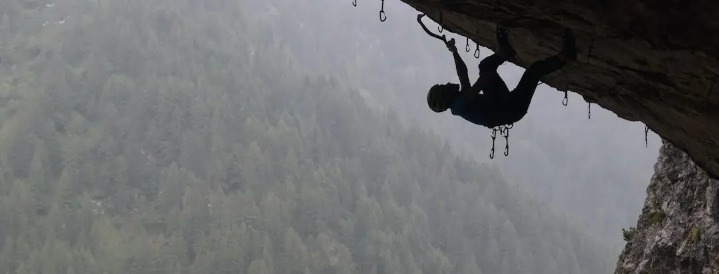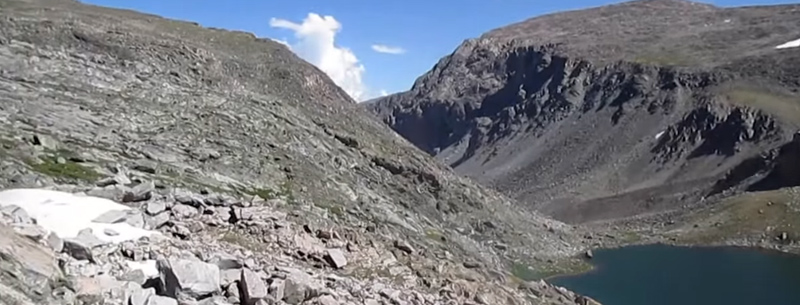Benefits of Rock Climbing
When you consider the benefits of rock climbing, you usually think first of the physical benefits. Although rock climbing is practiced by both genders and almost all ages, it is a sport that requires a great deal of physical strength. Upper body strength is extremely important. Most people who become involved in the sport soon realize that they must be in excellent shape to even begin to enjoy it. This leads to an increase in physical conditioning that is most often beneficial to the participant’s overall health.
Body Awareness
The sport also requires a great deal of mental self-discipline. Many adherents of rock climbing point to this as one of the biggest benefits. It demands total body awareness. Rock climbers often tell of how they never feel more alive than they do when they are clinging to the side of a rock. They must be aware of exactly where their feet and hands are located and every movement must be careful, slow, and deliberate.
Low Cost
Among the other benefits of rock climbing is the relatively low cost of the equipment needed. Most experts claim that the rock climber can be outfitted with the best possible equipment for a little over $300. This is not expensive compared to the investment needed for equipment in some of the other extreme sports that are popular today.
Self-confidence
Perhaps, the most important benefit of rock climbing is what it does for your personal self-confidence. This is something that is a bit hard to explain and really has to be felt to be completely appreciated. Rock climbers will speak of the tremendous sense of accomplishment and the exhilaration that comes at the end of a successful climb. When a person stands at the base of a rock face and looks up, the climb appears impossible. It is something that can not be done. Yet, when you have done it, you begin to feel that there is little that you can not do.

Rock climbing has many benefits. They are mental, physical, emotional, and financial benefits. There are some risks of injury as well, but the thousands of people who are taking up the sport and spreading it across the country feel the benefits far outweigh the risks. The indoor climbing hills have given more and more people a chance to taste these benefits in a place where the risks are the least, and many people who first experience rock climbing on the artificial climbs there are soon hooked and ready for the real thing outdoors.
History of Rock Climbing
There was some rock climbing down as a part of Alpine mountaineering. This was done mostly for rescue-type operations. It was not until the latter part of the 19th century that rock climbing was first seen as a sporting activity. It seems to have emerged in three distinct European areas around this time. The first was in Germany in the Elbe Sandstone Mountains in the Southeastern part of the country near the Czech border. By 1903, there were almost 500 climbers active in this region, and climbing clubs were being formed.
Around the same time, rock climbing was being viewed as a sport in England. Some of the early climbers attracted a lot of attention with solo climbs of very difficult cliff formations. It is here that the practice of assigning difficulty ratings to various formations began. Although formal climbing clubs were slow to form here, many climbers began to meet informally to discuss their climbs and share notes on techniques.
In the Dolomite Mountains of northern Italy, a 17-year-old student from Munich, Germany, made a daring solo climb and this led to this area being the third great European hotbed of rock climbing. In the United States, rock climbing and mountain climbing were viewed as similar activities, and it was not until the 1950s that it began to emerge as a separate sport. Still, many of the techniques used in rock climbing were developed as a part of mountain climbing.
In recent years, rock climbing has gone through a period of rapid evolution. New styles and improved equipment are constantly being introduced. Many rock climbers are starting to consider the hobby as almost more of a lifestyle than a sport. One trend has been the introduction of indoor rock climbing in urban areas. These facilities have artificial rock faces that are designed to simulate actual formations. The safety equipment used in the indoor arenas has made it possible to practice and experience much of the thrill and demanding nature of rock climbing without the risk.
Despite the safety equipment and improved techniques, rock climbing is not only a sport that demands a great deal of physical strength and stamina but is also hazardous. The history of rock climbing is recent history because mankind had enough challenges to his strength and stamina in just routine living in the past. Rocks were only climbing if there was some compelling reason to climb them. It says much about our modern society that rock climbing is becoming a popular activity. There is something in human nature that always seeks a challenge. Rock climbing came into existence because of that basic drive.
Rules for Rock Climbing
There is no set of rules that applies to the sport and hobby of rock climbing per se. Certain areas impose their own rules on climber before allowing them to climb in their jurisdictions. These rules generally began with the filing of a release of liability. Rock climbing can be dangerous and most areas will require this release. This is a common rule at indoor climbing arenas also.
National Parks
In National Parks or designated wildlife areas, the rules for rock climbing can range from the proper placing of climbing bolts to the use of power drills on the rock faces. These local rules are usually concerned with the protection of the environmental resources of the park areas. Many areas are considered no-bolt zones. Bolts of any kind can not be permanently attached to the mountains. Most of the best climbing zones are outside the no-bolt areas, however, and this rule does not impact the climbing opportunities.
Children
The area where there are the most rules in the rock climbing hobby is the indoor climbing arena. The rules here include the waiver of responsibility. There are also strict rules requiring parental permission forms for underage climbers. Many areas will not even allow underage climbers on the rock face unless a parent or responsible adult is also present.
Equipment
Other sets of rules are concerned with the type of equipment that is allowed and in some cases the equipment that is required. Most indoor climbing arenas do not allow the climbers to be barefoot. They also require the wearing of personal safety equipment such as approved helmets. Alcohol and drugs are strictly prohibited. Since many indoor climbing facilities also provide instruction in climbing techniques, most of these will not allow outside instructors to use the hills for classes or training purposes.
Competition
The final area that has strict and numerous rules is the climbing competitions. The rules here will be very strict regarding proper equipment and techniques allowed in the competition. The purpose of the competition rules is to ensure safety and to ensure competitiveness. These rules may differ from competition to competition, but there has been some effort to standardize the rules for competitive climbing. Free-style climbing in the outdoors and outside of Park areas and competitions has no rules, but the rules of common sense and personal responsibility.
Tips for planning your rock climbing trip and staying safe
Planning a rock climbing trip can be an exhilarating experience, but it’s crucial to prioritize safety along the way. Here are some essential tips to consider when planning your rock climbing adventure to ensure a memorable and safe experience.
- Research the destination: Before embarking on your trip, thoroughly research the rock climbing destination. Consider factors such as the difficulty level of routes, weather conditions, access to amenities, and any specific regulations or permits required. Understanding the terrain and potential challenges will help you adequately prepare.
- Assess your climbing abilities: Be honest with yourself about your climbing abilities and choose routes that align with your skill level. Overestimating your capabilities can lead to dangerous situations. If you’re a beginner, consider joining a guided tour or taking lessons to enhance your skills before attempting more challenging climbs.
- Plan your gear and equipment: Ensure you have the necessary gear and equipment for your rock climbing trip. This includes helmets, harnesses, ropes, carabiners, climbing shoes, and appropriate clothing. Always inspect your gear for any signs of wear or damage before each climb.
- Create an itinerary: It’s essential to create a detailed itinerary for your trip, including the specific routes you plan to conquer, estimated climbing times, and rest periods. Share this itinerary with a trusted friend or family member, so they know your whereabouts and can alert authorities if needed.
- Check weather conditions: Monitor weather forecasts before and during your trip. Inclement weather can pose significant risks to climbers. Be prepared to adjust your plans accordingly and always prioritize safety over completing a climb.
- Stay hydrated and fueled: Rock climbing is physically demanding, so it’s crucial to stay properly hydrated and fueled throughout your trip. Pack plenty of water, energy-rich snacks, and meals that are easy to prepare at your climbing site.
- Practice proper safety techniques: Familiarize yourself with essential safety techniques, such as proper belaying, securing anchors, and communication signals. Regularly review and practice these techniques to ensure they become second nature.
- Respect the environment: When visiting rock climbing destinations, it’s vital to respect the natural environment. Leave no trace by cleaning up after yourself, disposing of waste properly, and avoiding damage to vegetation.
- Take regular breaks: Climbing can be physically and mentally demanding. Take regular breaks to rest and recover, especially during longer climbs. Pushing yourself beyond your limits can increase the risk of accidents and injuries.
- Listen to your instincts: Trust your gut instincts when it comes to assessing risks and making decisions. If something doesn’t feel right or you’re not confident about a particular climb, it’s better to err on the side of caution and choose a safer alternative.




